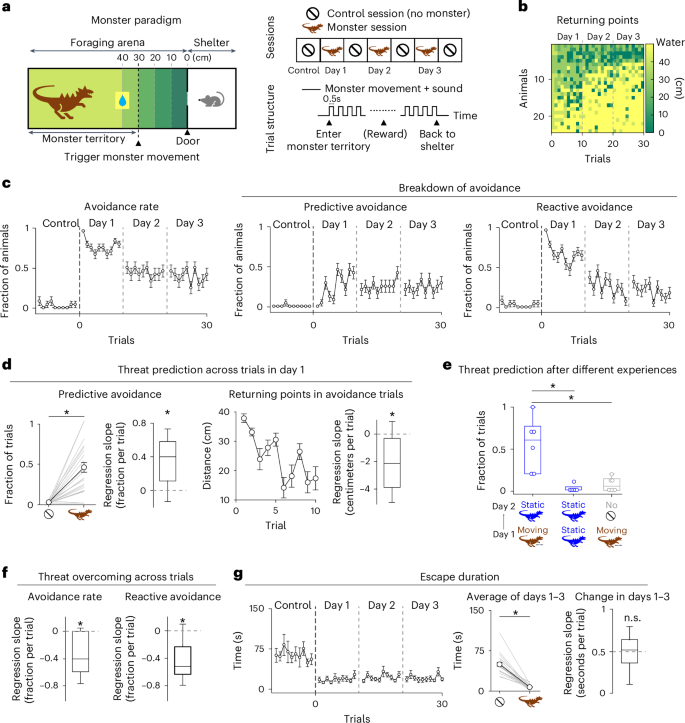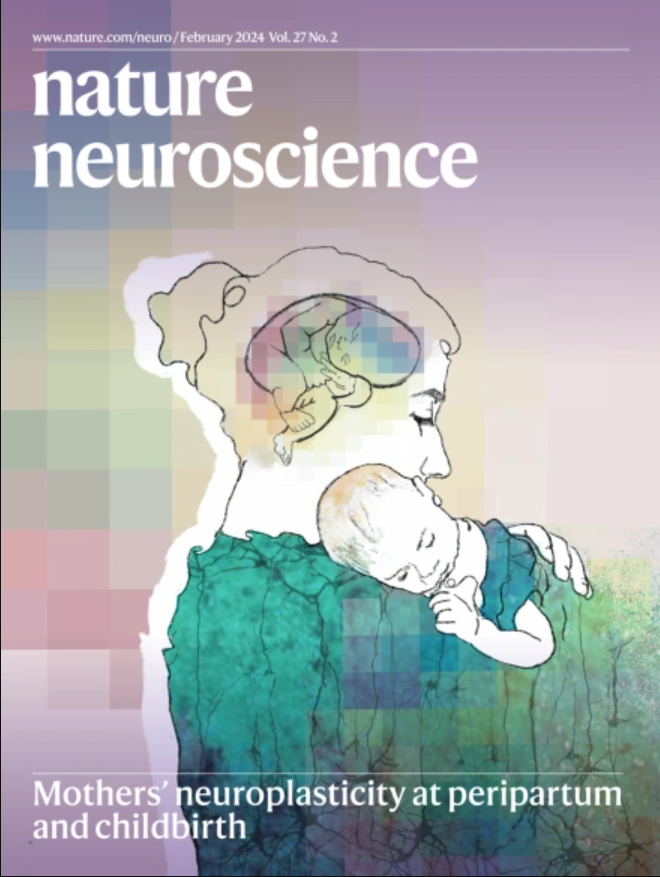Dopamine in the tail of the striatum facilitates avoidance in threat–reward conflicts
IF 20
1区 医学
Q1 NEUROSCIENCES
引用次数: 0
Abstract
Responding appropriately to potential threats before they materialize is critical to avoiding disastrous outcomes. Here we examine how threat-coping behavior is regulated by the tail of the striatum (TS) and its dopamine input. Mice were presented with a potential threat (a moving object) while pursuing rewards. Initially, the mice failed to obtain rewards but gradually improved in later trials. We found that dopamine in TS promoted avoidance of the threat, even at the expense of reward acquisition. Furthermore, the activity of dopamine D1 receptor-expressing neurons promoted threat avoidance and prediction. In contrast, D2 neurons suppressed threat avoidance and facilitated overcoming the potential threat. Dopamine axon activation in TS not only potentiated the responses of dopamine D1 receptor-expressing neurons to novel sensory stimuli but also boosted them acutely. These results demonstrate that an opponent interaction of D1 and D2 neurons in the TS, modulated by dopamine, dynamically regulates avoidance and overcoming potential threats. During foraging with threat–reward conflicts in mice, dopamine modulates two competing neuron types in the striatum for flexible threat coping, from initial threat avoidance to eventual overcoming of the threat.


纹状体尾部的多巴胺有助于避免威胁-奖励冲突
在潜在威胁发生之前对其做出适当反应是避免灾难性后果的关键。在这里,我们研究了威胁应对行为是如何受纹状体尾部(TS)及其多巴胺输入调节的。小鼠在追求奖励的过程中遇到了潜在的威胁(一个移动的物体)。最初,小鼠未能获得奖励,但在后来的试验中逐渐好转。我们发现,TS 中的多巴胺促进了对威胁的回避,甚至牺牲了获得奖励的机会。此外,多巴胺 D1 受体表达神经元的活动促进了对威胁的回避和预测。与此相反,D2神经元抑制了对威胁的回避,并促进了对潜在威胁的克服。多巴胺轴突在TS中的激活不仅增强了表达多巴胺D1受体的神经元对新感觉刺激的反应,而且还迅速增强了这些反应。这些结果表明,在多巴胺的调节下,TS 中的 D1 和 D2 神经元之间的对手相互作用动态地调节了回避和克服潜在威胁的能力。
本文章由计算机程序翻译,如有差异,请以英文原文为准。
求助全文
约1分钟内获得全文
求助全文
来源期刊

Nature neuroscience
医学-神经科学
CiteScore
38.60
自引率
1.20%
发文量
212
审稿时长
1 months
期刊介绍:
Nature Neuroscience, a multidisciplinary journal, publishes papers of the utmost quality and significance across all realms of neuroscience. The editors welcome contributions spanning molecular, cellular, systems, and cognitive neuroscience, along with psychophysics, computational modeling, and nervous system disorders. While no area is off-limits, studies offering fundamental insights into nervous system function receive priority.
The journal offers high visibility to both readers and authors, fostering interdisciplinary communication and accessibility to a broad audience. It maintains high standards of copy editing and production, rigorous peer review, rapid publication, and operates independently from academic societies and other vested interests.
In addition to primary research, Nature Neuroscience features news and views, reviews, editorials, commentaries, perspectives, book reviews, and correspondence, aiming to serve as the voice of the global neuroscience community.
 求助内容:
求助内容: 应助结果提醒方式:
应助结果提醒方式:


